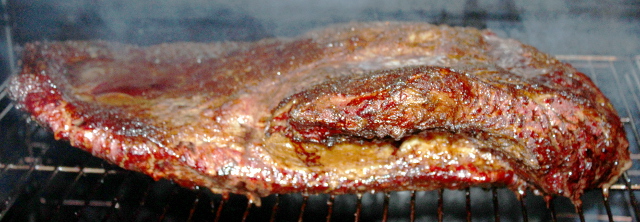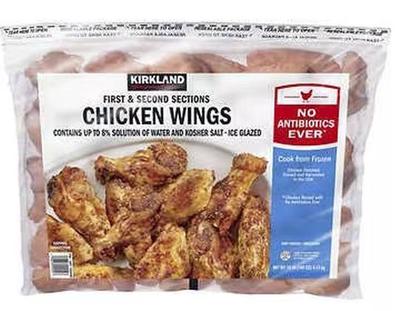Barbecue Beef Recipes
If you're looking for authentic barbecue beef recipes, you've come to the right place.
You'll find beef recipes you can cook in your smoker and some great recipes for your grill.
Cooked with fire from aromatic hardwoods, this is how to cook beef that's sure to please.
What Kind of Beef to Barbecue?
The best cuts of beef for your smoker are tough, fatty cuts with a lot of connective tissue. Anything that takes a long time to cook to become tender is suitable for your smoker.
You certainly don't want to throw tender cuts like a rib-eye steak on your smoker; save that for your grill.
Some classic beef cuts for your barbecue are beef ribs and, of course, beef brisket. (You can make some excellent barbecue beef sandwiches with that brisket!)
You can also cook things like meatloaf and sausages. Although these don't require long cooking times, a little smoke adds a lot of flavors. It's hard to beat a juicy smoked sausage with a snappy casing!
Selecting Beef for Your Smoker
When you go to select the beef that you want to cook low and slow, there are some things to consider; you want the meat to have:
- A fair amount of fat - Fat helps to keep the meat moist. The moisture also helps break the muscle fibers down and tenderize the meat. The fat also contributes tremendously to the flavor of the beef. Look for cuts that have lots of marbling. Ensure the fat cap is at least 1/4" thick. If it's over 1/4" wide, you will need to trim it down, so avoid cuts with a thick fat cap.
- Lots of connective tissue - Connective tissue is made primarily of protein. One type is collagen, and another tasty one is gelatin. Gelatin gives the meat a silky, succulent, melt-in-your-mouth quality. Another type of connective tissue is silver skin, the silver-colored membrane you see on meat. Silver skin will not break down, so you must remove it before cooking. You will find instructions for removing the silver skin and any other trimming needed in each recipe.
- A coarse grain- Meat with a coarse grain will give you the right texture when cooked for long periods. After cooking, it will still hold most of its structure, providing a good mouthfeel and chew. More delicate-grained meats will turn out mushy.
- Right color - Color is an indicator of freshness and proper handling of meat. You want your beef to have a bright red color. The brighter the color, the fresher your beef is. Avoid beef that is dark, discolored, or gray.
- No odor - Fresh beef should have little to no odor. If it does, discard or return it and get your money back. (Yes, most grocers will give you your money back for meat and produce if you're unsatisfied. But don't try to return a lousy peach to a produce store in New York!) The odor is the byproduct of bacteria and other nasty critters digesting your beef. The meat usually comes sealed unless you're lucky enough to live near a real butcher. So, ensure there aren't any offensive or foul odors upon opening. The exception to this would be Cryovac meats. Cryovac meats will have a smell from the process of nitrogen flushing and wet aging. This odor should dissipate after a few minutes. If it doesn't, the meat has spoiled.
How to Barbecue Beef Low and Slow
When you barbecue beef, the same rules apply when you barbecue anything else; you must cook it low and slow for the best results.
The ideal beef for barbecue is tough, with some connective tissue in it. Low and slow cooking will transform that tough meat into tender, juicy barbecue goodness.
This low and slow cooking process accomplishes several things for you:
- The long cooking process breaks down the connective tissues without drying out the meat, giving you a superior product and higher yield due to less shrinkage.
- Prolonged exposure to smoke gives you that smoky barbecue flavor we all love.
- This cooking method helps to render the fat.
- You get excellent bark formation.
Barbecue Beef Recipes
Beef is excellent for the smoker. That great beefy flavor combined with smoke and spice is hard to beat. Here are some recipes you should try out on your barbecue pit:
- Spicy beef sausages.
- Beef ribs are great for the smoker.
- Learn how to barbecue a brisket. It's fantastic sliced, or you can chop it up and make barbecue beef sandwiches. Always a crowd-pleaser.
Barbecue beef recipes for your grill:
- Barbecue hamburgers are simple and deliciously satisfying.
- Grilled Roast Beef. It's tender, juicy, and delicious.

